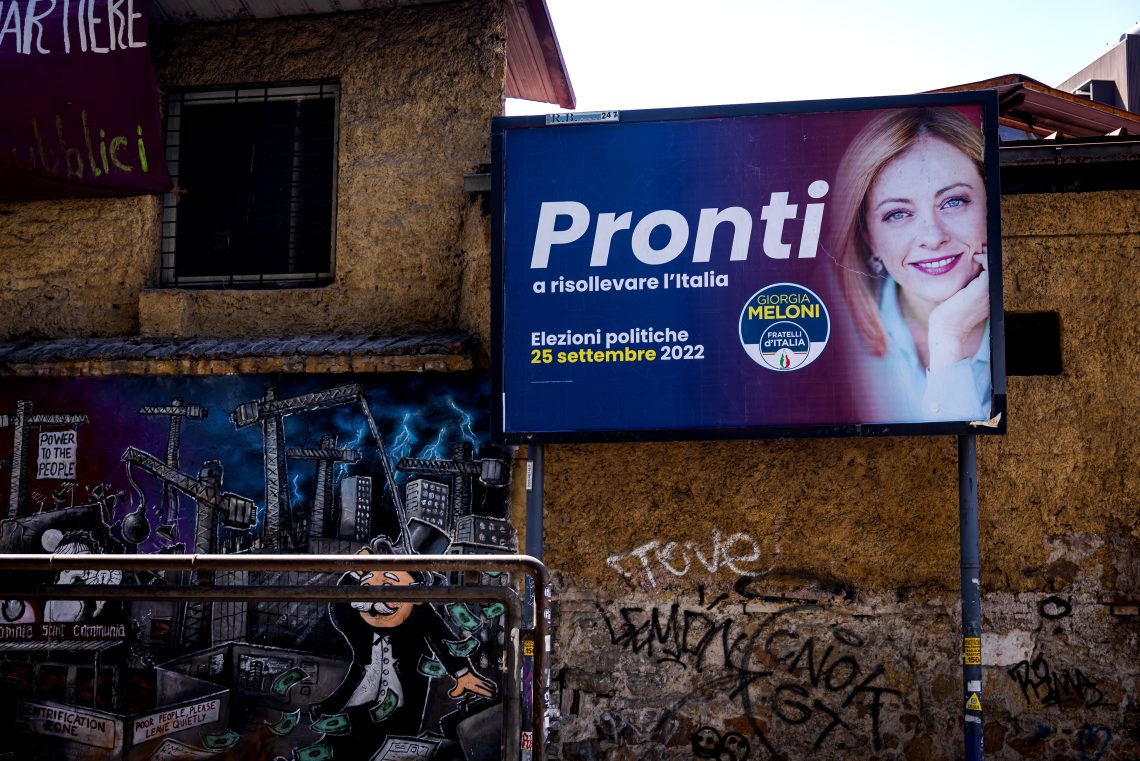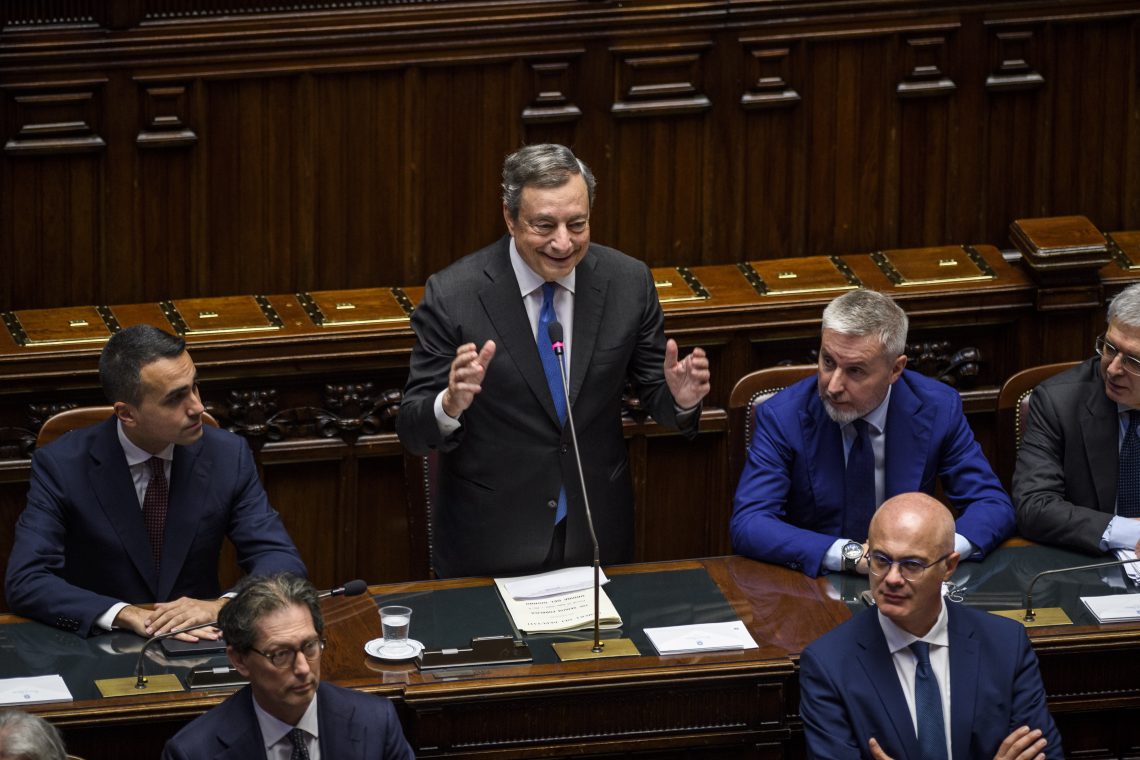Economically stagnant Italy moves on from Mario Draghi
A snap election in September will choose a parliament after the resignation of Prime Minister Draghi, a technocrat whose strong international reputation did not help him stay in power.

In a nutshell
- Mr. Draghi’s departing government tripled the budget deficit in two years
- No political party has a clear agenda for reviving economic growth
- Polls strongly favor conservative parties, led by the Brothers of Italy
Italy’s Mario Draghi, who, despite his July 21 resignation will remain as a caretaker prime minister until after a September 25 election chooses a new parliament, will have served longer as premier than Mario Monti, who similarly led a caretaker government while in office from 2011-2013.
Yet the two premiers left the country’s leadership in very different circumstances. Mr. Monti, who became prime minister when Italy was on the edge of default, largely succeeded in putting the country’s public finances in order. The main uncertainty after his tenure was whether the political right or left would win elections. Neither did, and another national unity government was formed, as the Democratic Party allied with Silvio Berlusconi, their former foe.
Draghi’s top two accomplishments
The outgoing prime minister took the country’s helm in February 2021 with two main goals. The first was to run an efficient vaccination campaign. Mission accomplished, largely thanks to army general Francesco Paolo Figliuolo, appointed as vaccine czar. The second was to secure largesse from the 806.9 billion-euro NextGenerationEU fund. Mr. Draghi, who had spent the previous eight years as president of the European Central Bank, used his prestige to shield Italy from criticism and win European funds. That was, however, only the first step: the resources need to be spent within a clearly defined schedule and with changes in the country’s legal and regulatory infrastructure (“reforms”).
As prime minister, Mr. Draghi had easier circumstances than Mr. Monti: he did not even have to attempt to reduce spending or raise taxes. Yet, paradoxically, he will leave a country mired in more fundamental uncertainty than when he took over.
Read more from Alberto Mingardi
Mario Draghi’s rising profile in Europe
High taxes, inflation and energy costs
The newly elected parliament will open on October 12. The new government will have to rush to create a new budget law. The Draghi government in recent months has been quite generous with special aid and subsidies to families and businesses to soften the blow of inflation and high energy prices.
Minister for Ecological Transition Roberto Cingolani recently insisted that the country can get through the next winter even if Russia completely stops providing gas. The question is how. The last two generations of Italians (and Western Europeans, more broadly) have no memory of double-digit inflation. But neither do they have any more experience with energy shortages and government seizing supplies. The Italian government has strongly backed the Ukrainian war effort but has maintained that it would limit the costs of supporting Ukrainian President Volodymyr Zelenskiy for Italian households. Yet it is not clear this will be the case: the government may force families to cut down on winter heating, despite its repeated assurances that the war in Ukraine will not limit their wallets or room temperatures. If this turns out to be untrue, the new government will face social unrest that may become radicalized if Italians believe the government has been telling them lies.
Inflation is another challenge. Italy has low salaries, which have been basically stagnant for over 20 years now. At the same time, taxes on labor in 2020 were the fifth highest in the 38-nation Organization for Economic Cooperation and Development: 46 percent vs. an average of 34.6 percent. Increasing salaries should be a priority of the new government. Yet the proposals on the table seem unlikely to achieve that goal: though it will be difficult this time, the right-wing Lega Party is flirting with lowering the retirement age, which tends to raise the social contribution tax on labor.
The left wants to introduce a national minimum wage, though the country traditionally has national bargaining agreements that achieve the same goal. The Brothers of Italy, currently placed by the polls as the leading party of a center-right coalition, wants to lighten the fiscal burden of businesses that hire more people. The attempt, similar to the left’s, is to hijack the distribution of business-provided resources.
Gross domestic product growth is projected to be a modest 0.9 percent in 2023.
Fiscal leeway will be limited, particularly if interest rates eventually cross into positive territory and the yield spread between German and Italian 10-year bonds begins to widen, signaling the growing unease in financial markets. The spread already widened during the Draghi premiership, from 103 to 200 basis points. It is now floating around 250 basis points, partly due to the election uncertainty and the European Central Bank (ECB) raising rates. The new Transmission Protection Instrument that the ECB hoped would bring spreads under control is apparently working. Yet the new government, whose head will not have the prestige of Mr. Draghi, will need to pay extra attention.
Though estimates have improved for 2022, with expected economic growth of 2.9 percent, the gross domestic product is projected to rise only a modest 0.9 percent in 2023. Any new government should strive to revive stronger growth, but this would require reforms. The very word reform is now confused with requirements that need to be fulfilled to access European funds. Whoever wins the elections will need both to keep up with the timetable set by the Draghi government and add perhaps some changes of its own making.

Berlusconi’s influence
Given the Italian predicament, one would expect an electoral campaign passionately devoted to discussing economic reforms. That is, however, unlikely to happen. For one thing, Italians suffer from a sort of reform fatigue. From 1994 to 2018, they were constantly promised profound changes to put the country back on the growth path. Though reforms were implemented, Italy’s transition is still in the making, a sort of never-ending story that ultimately disappointed voters.
The populist triumph of 2018 was partly a reaction against the litany of promises that mostly failed to accomplish their declared goal. Nobody understands this better than ex-Prime Minister Berlusconi, the master pied piper, always promising an Italian catharsis. This time, Mr. Berlusconi – in office from 1994 to 1995, 2001 to 2006 and again from 2008 to 2011 – began his campaign by promising to plant one million trees and raise pensions. Though he may have pleased those most worried about climate change and the summer drought, Mr. Berlusconi also signaled that he was unwilling to trouble himself with labors such as economic deregulation, freeing the labor market or cutting taxes.
It is unlikely that any party will wage the next election campaign on a pro-growth agenda.
Mr. Berlusconi is not alone. Over the past few years, Italy’s political parties have highly invested in culture wars. They had the luxury to do so because they entrusted the prime minister’s role to a seasoned technocrat like Mr. Draghi. Lega is going to campaign aggressively on immigration, though after Covid-19 and the subsequent reduction in international mobility, the issue is far less prominent. The left will rally around the flag of diversity and individual rights (LGBTQ+ causes, etcetera), which goes well with propaganda to shame “fascist” Giorgia Meloni, the leader of the Brothers of Italy and the most likely winner of the next election. In a desperate attempt to save something of their once huge following, the Five Star Movement will go for a mixture of environmentalism and social justice, to position itself at the extreme left.
Scenarios
It is unlikely that any party will wage the next election campaign on a pro-growth agenda. On a brighter note, no party will have a particularly dangerous economic agenda, certainly not one that would threaten the eurozone. In 2018, two parties (Lega and the Five Star Movement) were suspected of wanting to leave the euro. Nobody is flirting with the idea now. After NextGenerationEU, Brussels is no longer seen as the odious torchbearer of austerity but as a welcomed source of aid.
In many ways, Italian parties will do their best to mimic the peculiar mixture of policies offered by the Draghi government. The spendthrift technocrat leaves the country with a budget deficit three times the size of the government led by Prime Minister Giuseppe Conte, who served from July 2018 to February 2021, when populists from the right and the left allied for the first time.
Yet Italian politicians may be wrongly assuming that the spirit of the times has changed and that they will be allowed to continue with the status quo. They may be discounting how Mr. Draghi’s prestige helped Italy to receive a pass from the European Commission and benevolent attention from financial markets.
The course followed by the next Italian prime minister will be fraught with peril. While nobody can compete in international reputation with Prime Minister Draghi, his legacy has blemishes that will prove to be challenging from the first day of the new government.








